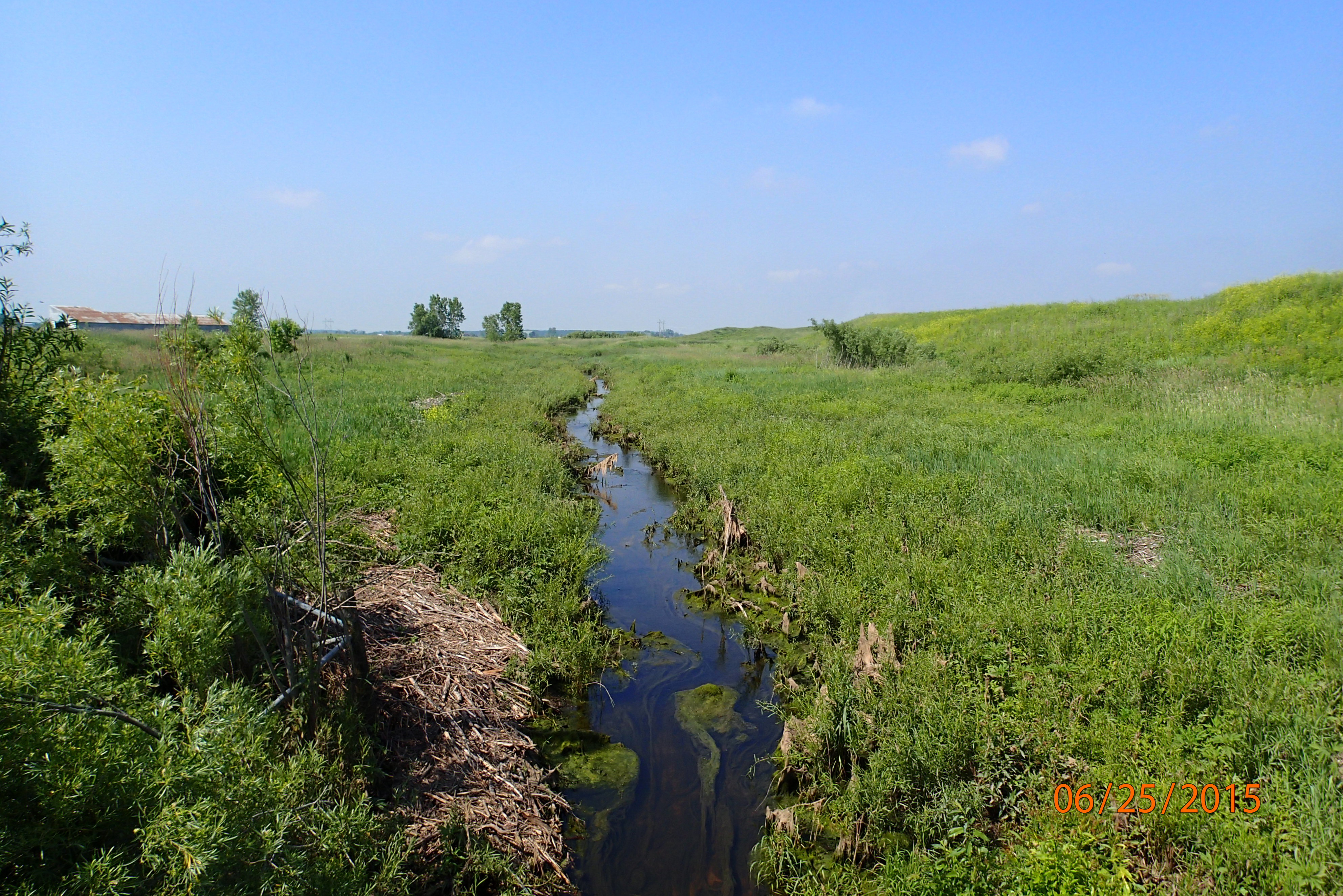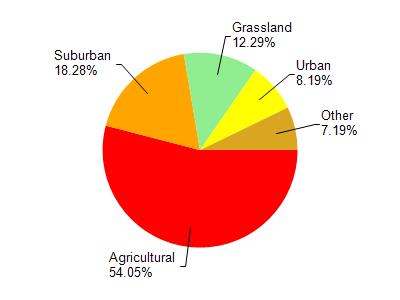
1.91 Miles
16.05 - 17.97
Macroinvertebrate
2018
Poor
Low DO, Chronic Aquatic Toxicity
Total Phosphorus, Ammonia (Unionized) - Toxin
Outagamie
No
No
Yes
Fish and Aquatic Life
Overview
Dutchman Creek, a 17-mile stream, has been ditched and the course altered to accommodate residential and commercial developments beginning in the area (HWY 41 & 172 and near Oneida Street). During mid-summer low flow conditions, most of Dutchman Creek and all of its tributaries dry up. Bottom materials consist mainly of soft sediments. Riffle areas are rare and there seems to be little scouring of the stream bottom. Streambanks are generally in poor condition and buffering is limited or absent. Crops and livestock dominate the riparian zone in the upper reaches, while residential, commercial and industrial land uses are dominate near the mouth. Stream habitat assessment surveys indicate poor habitat and dissolved oxygen measurements showed several violations of the state standard (5 mg/l) (Johnson 1996).
Bougie, Cheryl A. 1999. Lower Fox River Basin Water Quality Management Plan. Public Review Draft. Wisconsin Department of Natural Resources, Madison, WI.
Date 1999
Author Cheryl Bougie
Impaired Waters
Dutchman Creek from its mouth to Pioneer Drive (miles 0 to 4.04) was put on the Impaired Waters List in 1998 for phosphorus, low dissolved oxygen, and degraded biology. Evaluations every two-year cycle from 2016 to 2022 confirmed the phosphorus impairment.
Dutchman Creek from Pioneer Creek to edge of Tribal Land (miles 4.06 to 16.03) is on tribal lands.
Dutchman Creek from the edge of Tribal Lands to the headwaters (miles 16.05 to 17.97) was put on the Impaired Waters List in 1998 for phosphorus, low dissolved oxygen, and degraded biology.
Date 2022
Author Ashley Beranek
Condition
Wisconsin has over 84,000 miles of streams, 15,000 lakes and milllions of acres of wetlands. Assessing the condition of this vast amount of water is challenging. The state's water monitoring program uses a media-based, cross-program approach to analyze water condition. An updated monitoring strategy (2015-2020) is now available. Compliance with Clean Water Act fishable, swimmable standards are located in the Executive Summary of Water Condition in 2018. See also the 'monitoring and projects' tab.
Reports
Recommendations
Navigability Determination
S34 T23N R19E; Dutchman Creek, trib;
Navigability Determination
Lot 14 Finch Lane, Ashwaubenon
Dutchman Creek
Navigability Determination
S31 T24N R20E; Dutchman Creek, trib;
Management Goals
Wisconsin's Water Quality Standards provide qualitative and quantitative goals for waters that are protective of Fishable, Swimmable conditions [Learn more]. Waters that do not meet water quality standards are considered impaired and restoration actions are planned and carried out until the water is once again fishable and swimmable
Management goals can include creation or implementation of a Total Maximum Daily Load analysis, a Nine Key Element Plan, or other restoration work, education and outreach and more. If specific recommendations exist for this water, they will be displayed below online.
Monitoring
Monitoring the condition of a river, stream, or lake includes gathering physical, chemical, biological, and habitat data. Comprehensive studies often gather all these parameters in great detail, while lighter assessment events will involve sampling physical, chemical and biological data such as macroinvertebrates. Aquatic macroinvertebrates and fish communities integrate watershed or catchment condition, providing great insight into overall ecosystem health. Chemical and habitat parameters tell researchers more about human induced problems including contaminated runoff, point source dischargers, or habitat issues that foster or limit the potential of aquatic communities to thrive in a given area. Wisconsin's Water Monitoring Strategy was recenty updated.
Grants and Management Projects
Monitoring Projects
| WBIC | Official Waterbody Name | Station ID | Station Name | Earliest Fieldwork Date | Latest Fieldwork Date | View Station | View Data |
|---|
|
|

Watershed Characteristics
Dutchman Creek is located in the Apple and Ashwaubenon Creeks watershed which is 113.34 mi². Land use in the watershed is primarily agricultural (54.10%), suburban (18.30%) and a mix of grassland (12.30%) and other uses (15.40%). This watershed has 249.05 stream miles, 91.92 lake acres and 884.97 wetland acres.
Nonpoint Source Characteristics
This watershed is ranked High for runoff impacts on streams, Not Available for runoff impacts on lakes and High for runoff impacts on groundwater and therefore has an overall rank of High. This value can be used in ranking the watershed or individual waterbodies for grant funding under state and county programs.This water is ranked High Stream for individual Rivers based on runoff problems and the likelihood of success from project implementation.
Dutchman Creek is considered a Macroinvertebrate under the state's Natural Community Determinations.
Natural communities (stream and lake natural communities) represent model results and DNR staff valiation processes that confirm or update predicted conditions based on flow and temperature modeling from historic and current landscape features and related variables. Predicated flow and temperatures for waters are associated predicated fish assemblages (communities). Biologists evaluate the model results against current survey data to determine if the modeled results are corect and whether biological indicators show water quaity degradation. This analysis is a core component of the state's resource management framework. Wisconsin's Riverine Natural Communities.